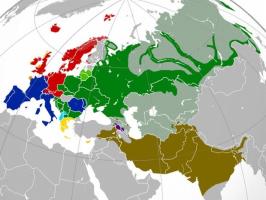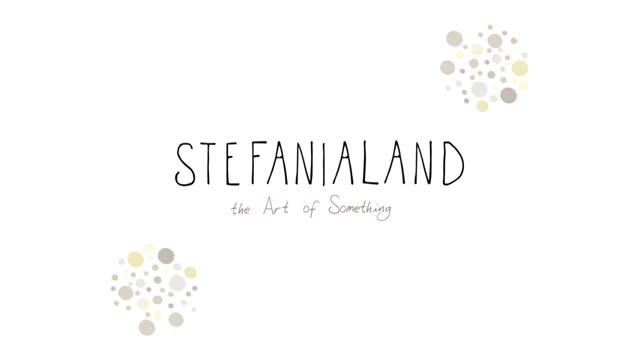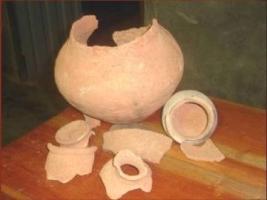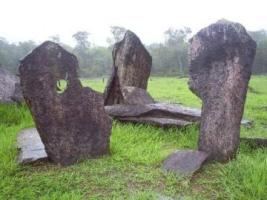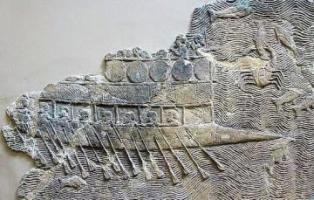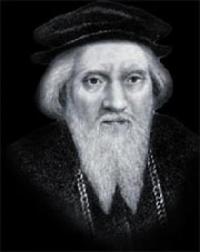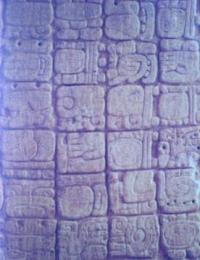A Critique of Kapleau's "To Cherish All Life"

by
Bruce Burrill
1820 Jefferson St.
Madison, WI 53711
Copyright 1994 Bruce Burrill
It is not difficult to find in popular books dealing with Buddhism or Hinduism issues that directly concern the study of the early civilizations of India. It almost goes without saying that lacking a careful consideration of the historical, philosophical, philological, anthropological, etc. issues, one is likely to take a stroll down the garden path of interesting but wrong conclusions. Examples of this are not hard to find, and the intention in this paper is to look at in detail an example that illustrates good intentions gone wrong for the lack of a solid background in Indian history and thought. There is no question that many of the issues of early Indian history -- and here we mean around the time of the Buddha -- are not finally decided leaving much room for conjecture. The question we must ask, however, is the conjecture sensitive to the questions (and answers) raised by historical study and the other disciplines that speak to issues of Indian civilization.
What we shall look at is Philip Kapleau's book, TO CHERISH ALL LIFE: A BUDDHIST CASE FOR BECOMING VEGETARIAN (San Francisco: Harper, 1982; and Rochester: The Zen Center, 1986). Essentially this is a book written by a religionist for fellow religionists. It addresses a question of no small importance for Buddhists -- what is our relationship and responsibility to our fellow sentient beings? This book, a stern, uncompromising statement following many of the stern, uncompromising arguments of the Lankavatarasutra, is of interest having been written by a prominent Western Buddhist, and it is of interest for its historical claims, but we must ask whether or not it does justice to a careful study of Indian civilization.
The text of Kapleau's statement is 56 pages with additional information on diet and protein written by a disciple of his. The first part is a standard outlining of the horrors of the factory farm and the abattoir. The second section deals with meat eating and the first precept of not killing. In the absolute, fundamental sense of Buddha-nature, Kapleau states (p. 6), "There is no demarcation between human and animal nature." He goes on to say (p. 19), "To willfully take life, therefore, means to disrupt and destroy this inherent wholeness and to blunt feelings of reverence and compassion arising from our Buddha-mind." He further states (p. 20):
...since our Buddha-nature has endless potential, the creature that is a cow today may in a future rebirth become a human being and from that state realize its innate perfection--that is, achieve buddhahood. Thus we have the fundamental Buddhist teaching that all life, human and non-human, is sacred.
Though there are a number of issues raised in this second section, we find of vital interest to Kapleau are the Buddha's dying from eating bad pork, and the Pali canon's allowance of meat eating. Of this first issue Kapleau, following Arthur Waley, rejects the notion that the Buddha died from eating bad pork (pp. 23-5). Of this second issue, occupying over a third of the discussion of the second section, Kapleau by the way of preface states (p. 3):
Through textual and other evidential material, as well as by reasoned argument, I have sought to establish that the Buddha could not have uttered the words attributed to him in the Pali scriptures with regard to meat eating....
It is this second issue that we shall look at in some detail, for it is here we find the center of Kapleau's argument. He puts forward three arguments We shall first look at them and then respond.
First, Kapleau contends (p. 34), "...that even before the Buddha's time the scriptures of the various spiritual traditions in India condemned flesh eating as not conducive to spiritual progress." Using Koshelya Walli's THE CONCEPTION OF AHIMSA IN INDIAN THOUGHT as a source, Kapleau states (p. 37), "The teaching of ahimsa influenced the spiritual climate of the Buddha's day." To illustrate this he quotes six passages of "ancient Hindu" texts from Walli's book.[1]
The first reads (p. 37):
Meat can never be obtained without injuring creatures, and injury to sentient beings is detrimental to heavenly bliss; therefore one should shun meat eating...
How then could the Buddha have allowed (defended?) meat eating, being so much against the current of spiritual thinking of the time?
Secondly, he states that the Mahayana sanction against meat eating flatly contradicts the Theravada position. He mentions the Sanskrit Lankavatara-, Surangama-, Mahaparinirvana- and, Brahmajala-sutras. He quotes from the first (p. 33):
It is not true that meat is proper food and permissible when the animal was not killed by himself, when he did not order others to kill it, when it was not specially meant for him...Again, there may be some people in the future who ... being under the influence of the taste for meat will string together in various ways sophistic arguments to defend meat eating...
Of this Kapleau states (p. 34):
...as Conze and other scholars have pointed out, many of the Sanskrit scriptures were contemporary, or nearly so, with the Pali [Theravada]. Isn't it reasonable to suppose that if the elders of the Mahayana were satisfied that the Theravada suttas correctly reflected the Buddha's views as respect meat eating, they would have remained silent on this point?
It is worth noting the above two arguments are used by Kapleau to show why (p.34) "the Mahayana teachings directly contradict those of the Theravada in the matter of meat eating." He also on the basis of these two arguments states that (p. 34), "...commentators [who] attribute the difference [between the Mahayana and the Theravada] to a shift in public morality that took place in the years between the compiling of the two set of scriptures" are wrong.
Thirdly, Kapleau asks (p. 39-40), "How did those words imputed to the Buddha get into the Pali Canon? The answer is simple: Monks and scribes still attached to meat eating put them there." There are two issues underlining this statement. First, Kapleau states (p. 30):
There has never been a genuine spiritual master either before, during, or after the Buddha's time who has defended meat eating or denied that it is a bar to realization of the highest states of spirituality. Why? Because meat stimulates the lower passions....
In other words, it is inconceivable that as a "genuine spiritual master' the Buddha could have "defended" meat eating. Secondly, he points out, referring to Rhys Davids' and Conze's work, that the Pali canon (as it is with the other canons) shows editing, reflecting "the prejudices or points of view" of the school it belongs to. The conclusion has to be that, using the terminology of the Lankavatarasutra, that monk scribes "under the influence of the taste for meat" have edited into the Pali texts "sophistic arguments to defend meat eating." So stands Kapleau.
Kapleau's first contention that early Indian scriptures prohibited the eating of meat can only in part be borne out by textual evidence. Some did and some did the opposite. If Kapleau wants us to believe that meat eating was not commonplace before, during, and after the Buddha's time, the evidence marshals strongly against such a view. Walli states that Indians of the Vedic and Upansishadic times were meat eaters, and some texts supported meat eating.[2] In volume two of R. C. Majumdar's THE HISTORY AND CULTURE OF THE INDIAN PEOPLE, dealing with the time between 600 B.C. and 320 A.D., we find this statement[3]:
In spite of the growing spirit of ahimsa fostered by the Jains and Buddhists, and enforced by emperors like Asoka, various kinds of fish and meat, not excluding beef, were extensively taken by the people.
Even the "ancient Hindu" texts that Kapleau quotes, like the one above are not without serious difficulty. The one above and three others -- that is, four out of the six that he quotes -- are quoted from page 145 of Walli's book and come from the Manusmrti. On the bottom of that page Walli quotes the Manusmtri, "An abstainer of meat and a performer of horse sacrifice, both these get equal merit." On the next page Walli states, "According to Manu, there is no sin in meat-eating, for that is the natural way of human beings, but abstention brings great rewards." On page 121 Walli states that according to the Manusmrti animals were created for the purpose of performing sacrifice. The texts that Kapleau quotes may argue against meat eating as it is a detriment to spiritual progress, but they also emphatically implore the wholesale destruction of animals for that end. This is something that Buddhism and Jainism strongly spoke against. These texts are hardly suited to be quoted in support of the first precept, for the context simply does not allow it, but Kapleau ignores this. The point is that despite what he wants the texts to say, the historical fact, as put forth by Walli, Majumdar, and others, is that meat eating was commonplace before, during, and well after the Buddha's time.
If the lack of historical considerations is a problem with the first argument, it is no less bewildering with the second argument. Does Kapleau really mean that the Sanskrit Lankavatarasutra, et al. mentioned above are really "contemporary, or nearly so, with the Pali"? The Pali canon was written down in the first century B.C. and the main corpus of the canon was probably settled before the third century B.C.[4] Following Hajime Nakamura in his INDIAN BUDDHISM, we find these dates for these texts: p. 212 Mahaparinirvanasutra, 300-400 A.D., p. 231 Lankavatarasutra, 350-400 A.D., p. 221 Brahmajalasutra, probably composed in China circa 350 A.D.[5] These texts are contemporaneous with the Pali texts only in geologic time.
In protecting his position that the Buddha could not have allowed meat eating, Kapleau argues, as we have seen, against the notion of a shift from meat eating to non-meat eating, but his position finds no support in the above dates, nor does it find support from scholars who have worked with these Sanskrit texts. D.T. Suzuki holds that the eighth chapter of the Lankavatarasutra, which deals with the prohibition against meat eating, is probably a later addition, having "no organic connection with the text proper." He goes on to say:
According to this, there must have been the accepting of meat-food among the followers of Buddhism in the time when the Lankavatara was compiled. Evidently, the Buddha did not object to their [the monks] eating it if the animal was not especially killed for them. This caused unfavourable comments among the other religions, for instance, the Lokayatas, and the Buddhists naturally did not like them, and this must have started the new effort to prohibit meat-eating altogether among the Mahayana advocates.[6]
D. Seyfort Ruegg states:
It is therefore probable that vegetarianism became established in Buddhism, at least in the practice of very many Mahayanists, neither in the wake of some generalized tendency supposed to derive from a primative pre-Aryan source nor as the result of the increasing influence of "heretical" Renouncers [samnyasin, inclusive of the Buddhists and Jainas], but rather in close connexion with a specific religious and philosophical teaching: the tathagatagarbha doctrine.[7])
It is important to note that the texts Kapleau mentions are the tathagatagarbha texts, and it seems reasonable to argue that the move toward vegetarianism arose both from internal as well as external pressures.
Kapleau, for his third argument, offers neither "evidential material" nor "reasoned argument". What Kapleau offers us is the fact that the Pali canon shows evidence of editing, and the belief that the Buddha could not allow meat eating; therefore, allowance of meat eating in the Pali text was the results of editing in by monks still attached to meat eating. This is not evidence or "reasoned argument," it is mere assertion. Of course, we cannot know with certainty what the Buddha said, but we can know what the tradition has to say, and we can know the cultural context within which it is said.
One of the important pieces of tradition in Buddhism is the Jivakasutta in the Pali canon. For Kapleau (p. 29-33) the Jivakasutta makes no sense in allowing meat that has not been seen, heard, or suspected of having been killed for oneself. He sees this as freely sanctioning "meat eating for everyone" and by implication, an approval of "butchering and the horrors of the slaughter house." Contrary to Kapleau and others this is not a sanction or a defense of eating meat for everyone. The rules of this discourse and of the corresponding Vinaya text are directed strictly to monks who unless ill are not allowed to ask for food, accepting whatever is given.[8] A monk, when "among the houses," accepted regardless of caste from everyone who wished to give. The attitude of early Buddhism was that all people "have the right to practice giving (dana)."[9]
Ruegg states:
And it has to be remembered furthermore that as an almsman the Bhikkhu was not only dependent on the offering he received on his begging round, but that as a person to be honoured [dakkhineyya] and a 'field of merit'[punnakkhetta] he was morally bound to accept any alms offered in good faith by a pious donor and that if he failed to do so he was interfering with the karmic fruit and just reward that the donor was entitled to expect.[10])
The problem we are faced with in understanding this issue is well put by Conze:
Since it is impossible to eat animals without harming them, a Buddhist should be a vegetarian. But if he is a monk, who begs his food by going round a village from house to house, and if this village is inhabited by non-vegetarians [non- Buddhists<?>, who would have been common even well after the Buddha's time], he comes up against a serious difficulty.[11])
We must keep in mind that in discussing the rationale of the Jivakasutta, we are not talking about Southeast Asian and Japanese societies today -- both of which are targets of Kapleau's vitriol. We are talking about a society that was not Buddhist, and where many of the forest dwelling mendicants, of whom the Buddhists and the Jains were a part, obtained their daily food by going among the houses taking whatever food that was offered. There is no evidence that the forest dwelling mendicants were exclusively, or even predominately, non-meat eating. To the contrary, Nand Kishore Prasad states, "The Jaina Canonical texts bear ample evidence to show that meat-eating or fish-eating was in practice among the early Jaina monks."[12] He goes on to state, "...to seek out pure vegetarian food was an impossibility for the early [Jaina] monks, and thirdly to eat meat or fish not prepared for their sake was normally not regarded as violence. The Buddhists were perhaps allowed non-vegetarian food because of the latter two reasons." He further states that a vegetarian diet became commonplace with the Jains later.[13]
The Jivakasutta states that not only should a monk refuse meat that he knows or even suspects has been killed for him, but the donor should not kill or cause an animal to be killed in order to feed a monk (and we could add by extension: and to feed oneself). The Jivakasutta goes on to speak about the attitude with which a monks eats a meal -- meat or otherwise. Of this Walli states:
If a householder invites an almsman to a meal and serves an excellent meal, the almsman has got no hand in the selection of the meal, he eats his food with indifference with full knowledge that it [food] affords no refuge, at such a time, an almsman's thoughts are not set on hurting himself, or others, or both. That almsman eats food to which no blame attaches.[14])
By way of contrast Kapleau's response to the Jivakasutta is:
But if they [monks] ate the more (by ordinary standards) delectable meat of cows, pigs, chickens, and sheep, not only are they indulging themselves in the manner of lay persons but, even worse, they are indirectly causing pain and death to other living creatures and perpetrating morally indefensible acts.(p. 33)
We shall here let Ruegg speak once more:
Finally, since in Buddhist thought it is the intention with which an act is accomplished that determines its moral and karmic quality, the Bhikkhu's accepting and eating meat in the conditions specified above cannot be dismissed as necessarily a mere subterfuge allowing him to circumvent some share of responsibility in a series of acts involving vihimsa at an earlier stage.[15])
In conclusion we can see that Kapleau's effort fails. He does not give his reader accurate information, and the reason for this is simple: Kapleau lacks the appropriate background to do so. We are not arguing here that one needs to be an Indologist or a Buddhologist, but in an enterprise that makes historical claims the reader should expect at least some attempt at historical accuracy, and not mere assertion based upon notions of how things should be independent of what research shows. Did the Buddha eat meat, and allow meat to be eaten? In all likelihood he did both, and we can say this after looking carefully at the historical and cultural evidence as we have it in Jaina, Buddhist and Brahmanical texts, which is more than merely suggestive. Kapleau comes to us stating that the Buddha could not have eaten meat or allowed it, but he demonstrates an inability to handle the research material he has at hand. When he states that "Conze and other scholars have pointed out, many of the Sanskrit scriptures were contemporary, or nearly so, with the Pali," we can find no verification that this statement is so. Clearly, Conze was too good a scholar to make the mistaken assertion that Kapleau attributes to him, and Conze's own discussion of the question of meat eating is, as we have seen, in one brief paragraph more to point than is Kapleau in his 56 pages. Kapleau's use of Walli is equally disastrous. He shows no sensitivity to the dating of the material, though Walli provides little help. More importantly, however, he ignores the evidence from Walli that contradicts his position. Even more importantly Kapleau makes no distinction between descriptive and prescriptive in dealing with the "ancient Hindu" texts, nor does he show any understanding that the "ancient Hindu" material that quotes from Walli's book is Brahmanical and thereby representing an elitist body of literature. It is unfortunate but Kapleau's journey down the garden path is complete. It was journey that could have avoided, but it was one upon which he served as his own guide.
Notes
[1] Varanasi: Bharata Manisha, 1974. p. 145.
[2] Walli, 113, 143, 144, 146, 150, 151.
[3] London: George Allen & Unwin, 1951. p. 577. See also Vol. I p. 520. This is very strongly supported by Om Prakash's FOOD AND DRINKS IN ANCIENT INDIA, Delhi: Munshi Ram Manohar Lal, 1961, passim.
[4] Ling, Trevor O. A DICTIONARY OF BUDDHISM. New York: Scribners, 1972. p. 255.
[5] Tokyo: KUFS Publication, 1980.
[6] STUDIES IN THE LANKAVATARA SUTRA. London: Routledge & Kegan Paul, 1930. pp. 368-9
[7] "Ahimsa and Vegetarianism in the History of Buddhism." In BUDDHIST STUDIES IN HONOUR OF WALPOLA RAHULA. Ed. S. Balasooriya, et al., London: Gordon Fraser, 1980. pp. 236-7.
[8] The Mahayanist monks of China, Vietnam, and Tibet follow the non-Mahayanist Vinayas of the Mulasarvastivada and Dharmagupta, which, as does the Pali Vinaya, have the three allowances. They are a very old part of the Buddhist tradition that cannot be brushed aside lightly. See THE MIDDLE WAY Vol. 60, No. 2 page 69: The Dalai Lama states that meat eating is not prohibited by the Vinaya, and he states that he does not follow a vegetarian diet.
[9] Bhikkhu Khantipalo. THE BUDDHIST MONK'S DISCIPLINE. Kandy: BPS 1969. p. 7.
[10] Ruegg, p. 239.
[11] Conze, Edward. BUDDHISM. New York: Harper & Row, 1959. p. 62.
[12] From the Jain Acaranga Sutra (Ayarangasuyam): "A monk or a nun on a begging-tour should not accept meat or fish containing many bones [atthi], so that only a part of it can be eaten and the greater part must be rejected...[if meat with many bones is put in the mendicant's bowl] he should say, after consideration: "O long lived one! (or, O sister!) it is not meet for me to accept meat with many bones; if you want to give me a portion of whatever sizes, give it [to] me; but not the bones!" ...But if he inadvertently accepted it, he should not say: "No, away, take it!" Knowing this, he should go apart...eat the meat or fish....
Hermann Jacobi (tr.) Gaina Sutras. Vol. XXII: The Sacred Books of the East. Ed. F. Max Muller, Oxford: Clarendon Press, 1884, pp. 114-5.
See Prasad (below) pp. 117-8 for a discussion of the terms flesh (mamsa) and bones (atthi).
[13] STUDIES IN BUDDHIST AND JAINA MONACHISM. Bihar: Research Institute of Prakrit, Jainology & Ahimsa, Vaishali, 1972. pp. 117-8.
[14] Walli, p. 193.
[15] Ruegg, p. 239.
Additional comments
Kapleau could have strengthened his argument by appealing to the fact that the Mahasamghika Vinaya contains no mention of the three allowances. In HISTORY OF RELIGIONS Aug. 76 Vol. 16 Nattier and Prebish point out that the Mahasamghika Vinaya is the oldest version (pp.267-9). It is only in the Pali, Dharmagupta, Sarvistivada, etc. vinayas that we find the three allowances. In addition we do not find the Jivakasutta in the Chinese version of the Majjhima Nikaya, the Madhyama Agama. On the face of it Kapleau's argument does seem to be supported by Nattier and Prebish's contentions as by the absence of the Jivakasutta. It is theoretical then that we could get a canon without mention of the three allowance.
Nattier and Prebish argue that Mahasanghika vinaya is the oldest on the basis of the Pratimoksa rules, the Mahasanghikas having fewer rules. They argue since the Pratimoksa is important for maintaining the identity of the sangha, it is not likely to be easily changed, and the assumption seems to be the fewer the rules, the least changes and therefore the older it is. Maybe. We don't think one can generalize from the specific patimokkha rules -- if they are older or not -- to the whole of the vinaya. None of the different schools rules mention the three allowances, but none of the patimokkha rules of any school prohibit meat eating. The discussion of meat eating in the Pali texts can be found in at least three places in the Pali vinaya, and these three allowances are found in the vinaya texts of all except the Mahasanghikas. Again, it may be that the Mahasanghikas have the oldest pratimoksa, but that is not necessarily to say that their vinaya texts as a whole are older. Nakamura in his INDIAN BUDDHISM states that comparative study of the vinayas is "a favorite subject of Japanese scholars." He is of the opinion based upon recent and exhaustive Japanese studies, that the Pali vinaya is the oldest, followed by the Dharmaguptas, and then we have the Mahasanghikas.
In a footnote in John C. Holt's DISCIPLINE: The Canonical Buddhism of the Vinayapitaka, Holt states: "Hirakawa argues that the Suttavibhanga of the Pali Vinaya represents the oldest version of the first part of the Vinayapitaka that has survived. He bases his assertion on the fact that the Pali recension contains the least amount of apadana material when compared to other texts. Hirakawa considers apadanas to be a genre of literature from a later period. See Hirakawa, A STUDY OF THE VINAYA (Tokyo: Sakibo-Busshoron, 1960), pp.12-15."
This now brings us to the Jivakasutta. The Ven. Minh Chau is in his THE CHINESE MADHYAMA AGAMA AND THE PALI MAJJHIMA NIKAYA: A COMPARATIVE STUDY (Saigon: The Siagon Institute of Higher Buddhist Studies, 1964) of the opinion that this discourse was dropped from the Chinese text: "Again the dropping from all the Chinese Agamas of the Pali sutta number 55...."(p. 31.) It can probably be argued that the Chinese canon shows far more evidence of sectarian editing then does the Pali canon. The Agamas were brought in to China after Mahayana Buddhism had already been established there, and it is far more likely that biases of the translators are reflected in the Chinese texts. For example, the Chinese version of the Anguttara Nikaya, the Ekottaragama, talks about hinayana and mahayana, which signifies a very late editing, indeed. The Pali Anguttara Nikaya was probably fixed about 1st century B.C., but the Chinese version can be dated about the 2nd or 3rd century A.D., according to Nakamura.
DISTRIBUTION AGREEMENT
TITLE OF WORK: A Critique of Kapleau's "To Cherish All Life"
FILENAME: JIVAKA.ZIP
AUTHOR: Bruce Burrill
AUTHOR'S ADDRESS: 1820 Jefferson St., Madison, WI 53711
PUBLISHER'S ADDRESS: N/A
DATE OF PUBLICATION: 1994 (DharmaNet is first publisher)
ORIGIN SITE: Access to Insight BBS, Barre MA * (508) 433-5847 (DharmaNet 96:903/1)
The author retains all rights to this work and hereby grants electronic distribution rights to DharmaNet International. This work may be freely copied and redistributed, provided that it is accompanied by this Agreement and is distributed at no cost to the recipient. If this work is used by a teacher in a class, or is quoted in a review, the author shall be notified of such use.
It is the spirit of dana, freely offered generosity, which has kept the entire Buddhist tradition alive for more than 2,500 years. If you find this work of value, please consider sending a donation to the author or publisher listed above, so that these works may continue to be made available. May your generosity contribute to the happiness of all beings everywhere.
DharmaNet International, P.O. Box 4951, Berkeley, CA 94704-4951









